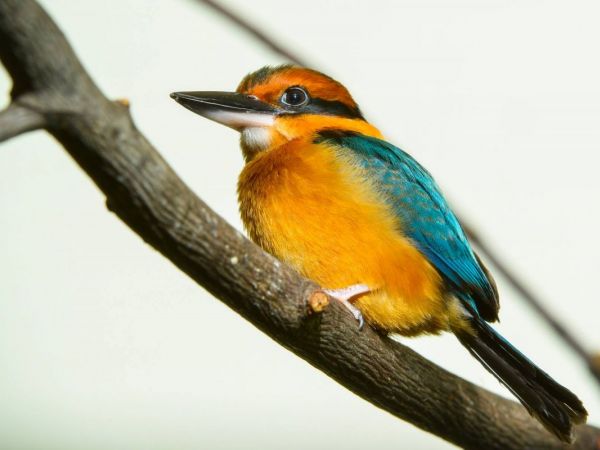
Given that small population, it was easy to believe that, as the zoo said, of all the birds and beasts in its collection, the bird, a Guam Kingfisher, belonged to the “most endangered species” there.
On Saturday, the zoo said, the bird died. He was 17 years old, the zoo said, making him a survivor among survivors, a long-lived member of the small band who were his avian brethren.
In the words of the announcement made Monday by the zoo, he was “geriatric for his species.”
In Washington, this Guam Kingfisher made his home at the zoo’s Bird House. Before coming to the zoo in July of 2013, he had been spending his blue-backed time at the Smithsonian Conservation Biology Institute in Front Royal, Va.
Members of the species often measure about 10 inches in length, with a prominent, pointed bill that is as long as two inches.
Although the kingfisher had enjoyed a longer life in which to display his cinnamon- colored belly than many of his species, his death was nevertheless sad, the zoo said.
He was not the only Guam kingfisher at the zoo or the Front Royal facility. A report in Smithsonian magazine a little more than five years ago placed the population at the two places at 10. It noted that at the time of its 2011 publication, two new ones had just been born at the conservation institute.
Breeding has been painstaking, and difficult. Population growth has been slow.
With the 17-year-old gone, the zoo said, only 145 Guam kingfishers remain throughout the world.
Even that low-three-figures number is far more than had once existed.
By accident, the brown tree snake was introduced to Guam shortly after the second World War, specialists said.
That brought doom to many of the island’s species. Evolution had not equipped them to elude the reptile. The kingfishers made easy prey, according to the zoo. It was estimated that by the early 1980s, their numbers had dwindled alarmingly, and only about 30 remained.
The threat of extinction touched off vigorous efforts at conservation, which entailed removing the birds from their native haunts, with the hope of some day reintroducing them.
However, at present, specialists say, they exist only in captivity.
The elderly bird that died last week did not contribute to the breeding program, the zoo said. But it said, he was “a terrific ambassador for his species.”

